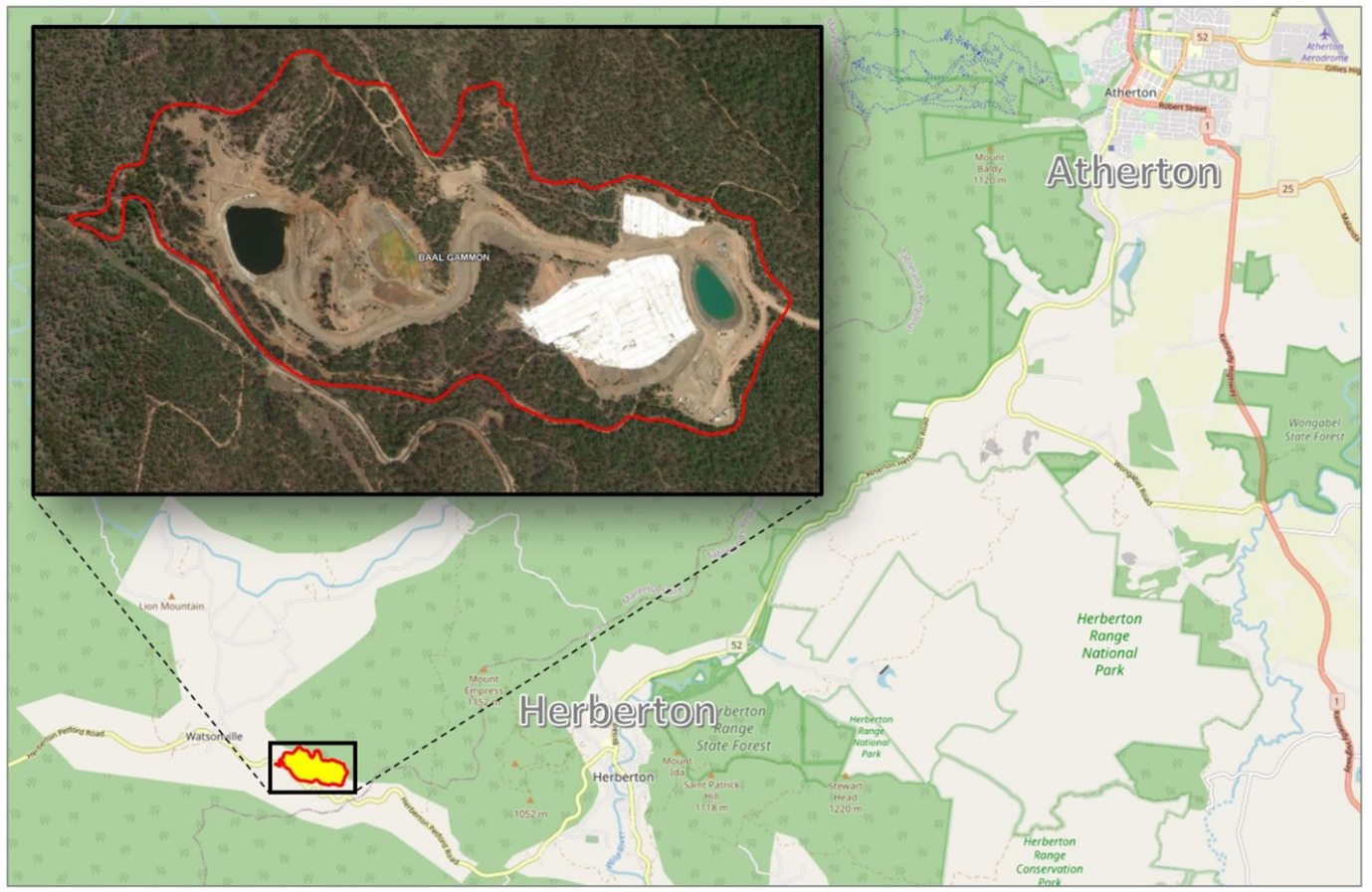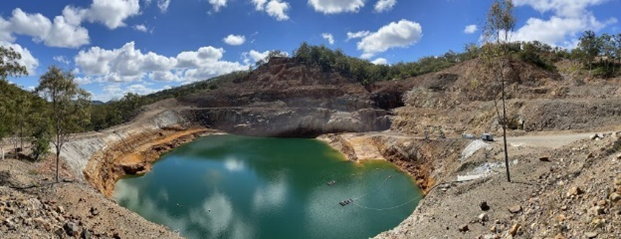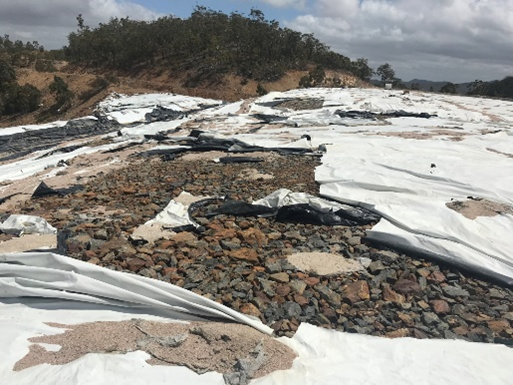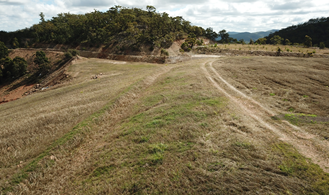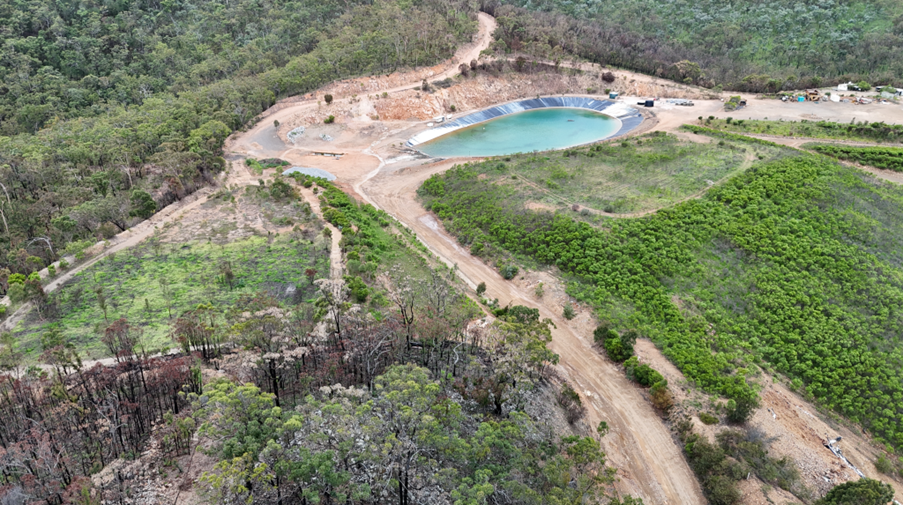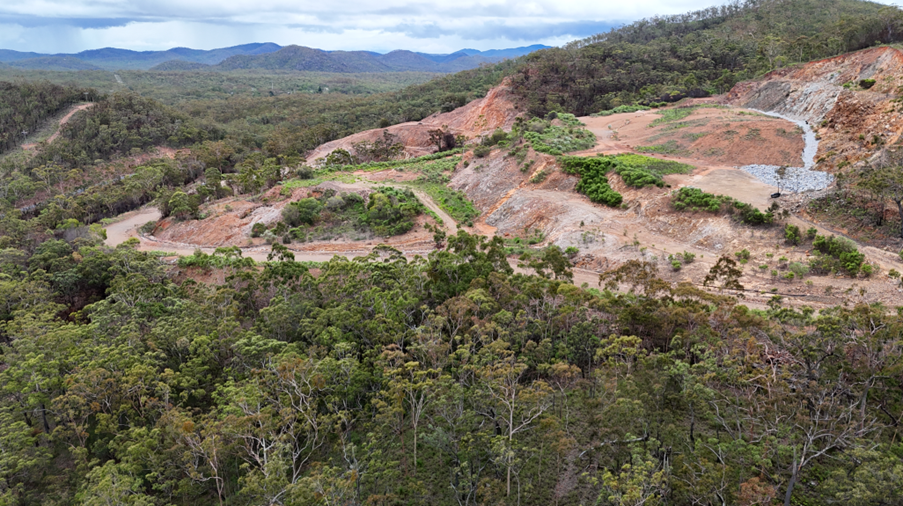Baal Gammon remediation project
The Baal Gammon mine is an opencut copper mine located 20km west of Herberton, in Far North Queensland. It was abandoned in 2019 after the mine operator’s mining lease was cancelled due to compliance issues. It has been actively managed by the Department of Natural Resources and Mines, Manufacturing and Regional and Rural Development through the Abandoned Mine Lands Program. Mining at Baal Gammon has occurred for over 100 years, with open cut operations taking place between 2011 and 2016.
The site has an open-cut pit, a waste dump, a lined water storage pond, hardstand areas and limited staff facilities. There are shafts and adits (passages) that connect to historical underground workings. There is no ore processing infrastructure or tailings dams at the site, as all ore was moved offsite for processing.
The waste rock onsite is highly mineralised, and when interacting with water can produce acidic leachate with elevated heavy metals. Therefore, the focus is on reducing the generation of contaminated water, and then intercepting, containing and managing any residual water onsite. Water volumes are reduced by treating, evaporating irrigating or releasing treated water. This ensures sufficient storage capacity for future rain events.
Past releases of untreated mine-affected water have contributed to contamination in Jamie Creek. In 2023, Queensland Health advised that Jamie Creek was not suitable for drinking and domestic or recreational purposes. This advice remains current.
- View a glossary of mining terms used on this page.
Project snapshot
Region: North Queensland
Location: 20km west of Herberton on the Atherton Tablelands, Latitude -17.382700, Longitude 145.328500
Commodity: Copper
Mining type: Open cut
Date of abandonment: May 2019
Status: Primary remediation completed with ongoing care-and-maintenance activities
Native title interest: Bar-Barrum people represented by the Bar-Barrum Aboriginal Corporation
Public land registers: Listed on the Environmental Management Register
Photo gallery
Key risks
Environmental risks associated with:
- large volumes of acid-forming waste rock onsite (encapsulated), in addition to pit highwalls, which can oxidise and contaminate water (such as rainfall) that contacts it
- residual seepage from the capped waste rock dump
- potential for pit overfilling (due to an extreme rainfall event or gradual accumulation of water) leading to an uncontrolled release of contaminated water, causing downstream impacts to Jamie Creek, and potentially the Walsh River.
Health and safety risks associated with:
- potential failure of the earth wall surrounding the mine pit should an overflow occur, with potential downstream impacts related to flash flooding
- onsite injuries related to fall risks around the pit high-wall or historic shaft/mine entrances
- onsite injuries related to water management infrastructure and general mine hazards.
Completed works
- Installation of improved pumping systems, water treatment infrastructure, and evaporation equipment.
- Removal of waste material from site.
- Testing and characterisation of waste rock across site.
- Consolidation and capping of acid-forming material in the pit cutback area, followed by capping and installation of clean water diversions.
- Capping of the main waste rock dump (consisting wholly of acid-forming material).
- Revegetation activities across the site.
- Installation of lime rock drains to mitigate against residual acidity.
Planned works
- Ongoing site management, including preventing unauthorised entry to site, operation and maintenance of pumping systems (including seepage pump-back system), and environmental monitoring.
- Undertaking water management activities where practical, involving a combination of treatment, evaporation, irrigation or release, as appropriate.
- Ongoing stakeholder engagement.
- Monitoring and maintenance of remediated areas, as required.
- Progressive revegetation activities to further enhance native plants establishment across site.



